Review: Stafford Bungalow, Sri Lanka
Days of Raj elegance live on behind the white picket fences at the Stafford Bungalow. The roads to Ragala snake, writhe and wriggle forever upwards through the tea fields of Sri Lanka’s central region. A mile above sea level, in Sri Lankan hill country, sits the Stafford Bungalow. A luxury boutique villa with full service.
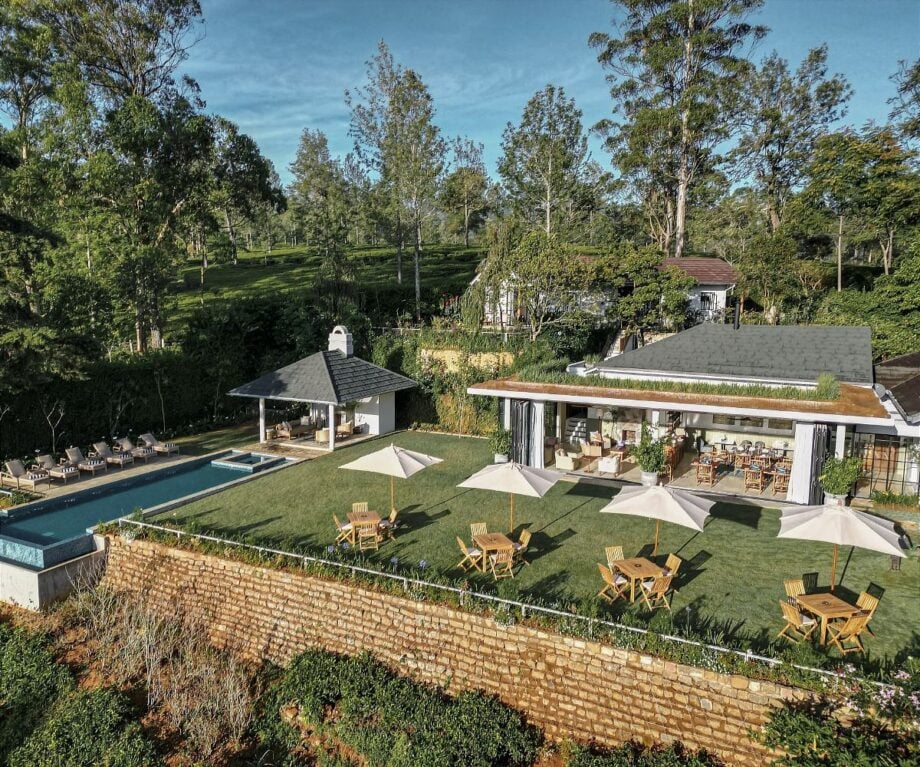
Set amidst a working 50 acre plantation, dotted with yellow acacia trees and morning glory plants, the bungalow recalls the luxurious lifestyle of the colonial tea planters. Built in 1884 the black-and-white timbered architecture looked to the Home Counties for its inspiration.
Although the original planters Sir G.H.D. Elphinstone and J. Paterson Senior were Scottish, the local area became known as Little England. Not just for the billiard-table flat green lawns and English country garden roses but also because of the cool climate and regular rain.
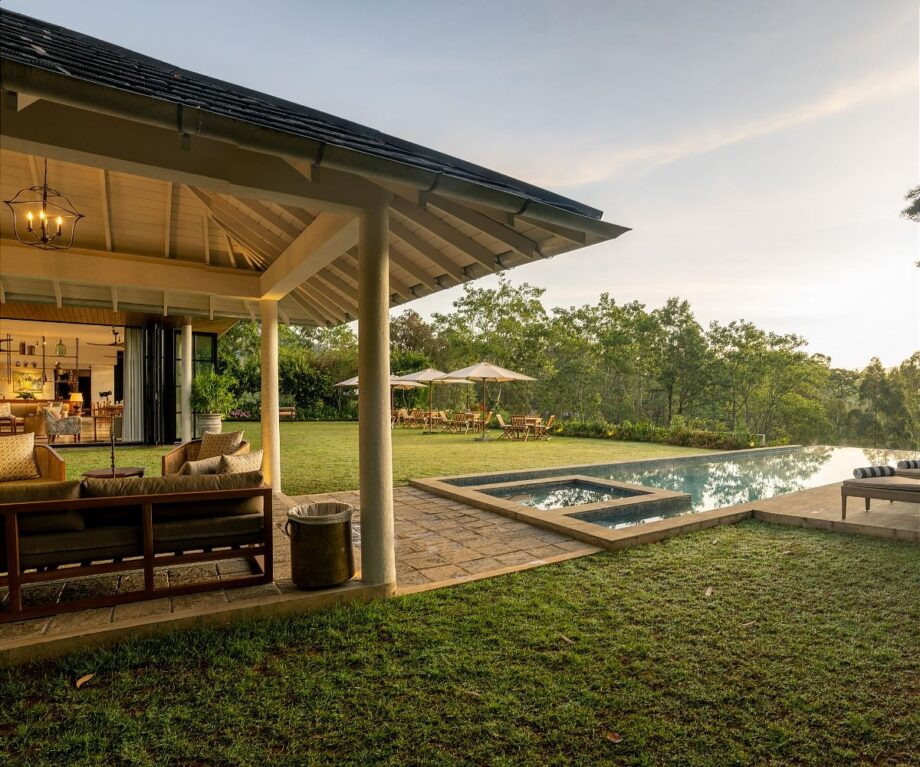
Recalling the homely style of the plantation years, the bungalow has four guest rooms and a further two within the owner’s cottage.
A sense of privacy and timeless elegance have drawn the Sri Lankan President to stay at Stafford Bungalow as a retreat from the pressures of office.
The welcome
Whilst we were travelling, Christy our butler, rang asking for selections from the lunch menu. On arrival, with drizzle in the air, we are met by staff with umbrellas.
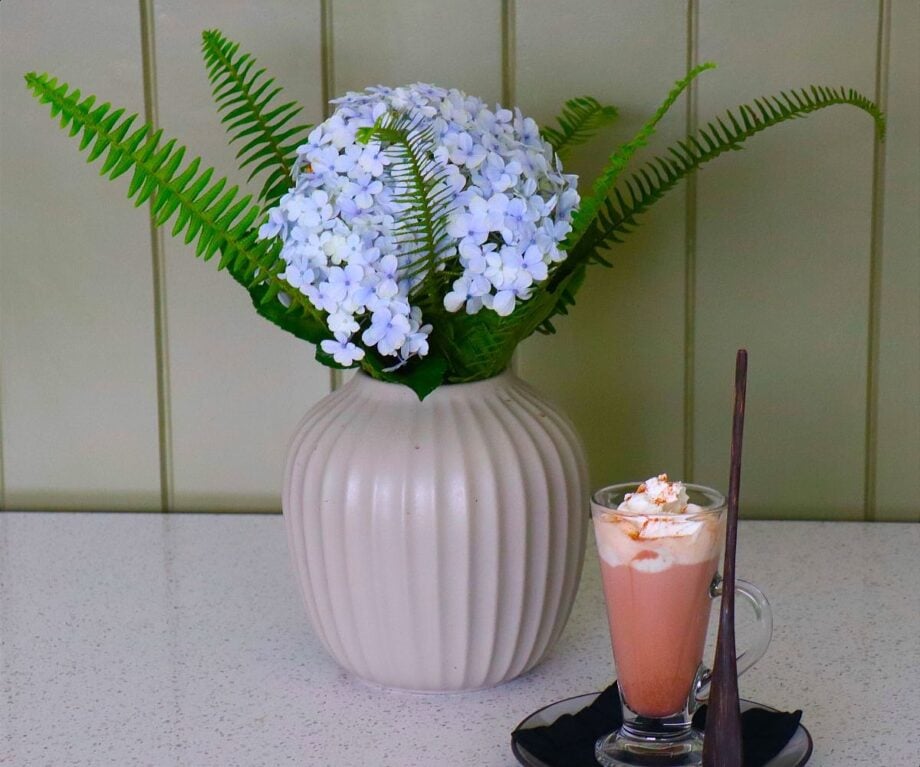
We appreciate warm flannels and hot chocolate after the long drive.
The room
The ground floor Master Suite leads out on to a covered patio with an inviting sofa as well as table and chairs. Wrapping around the corner of the dual aspect suite there is a small walled garden.

Burgundy curtains and dark wooden floors create a sense of opulence. Still life artwork of flower arrangements would not look out of place in a Royal Academy summer exhibition.
Renowned interior designer Taru Fonseka uses furnishings to recreate the aura of a lost age. Dark wood wardrobe, dressing table, desk, chests of drawers and chairs surround a solid four poster bed to build a sense of heritage and tradition.
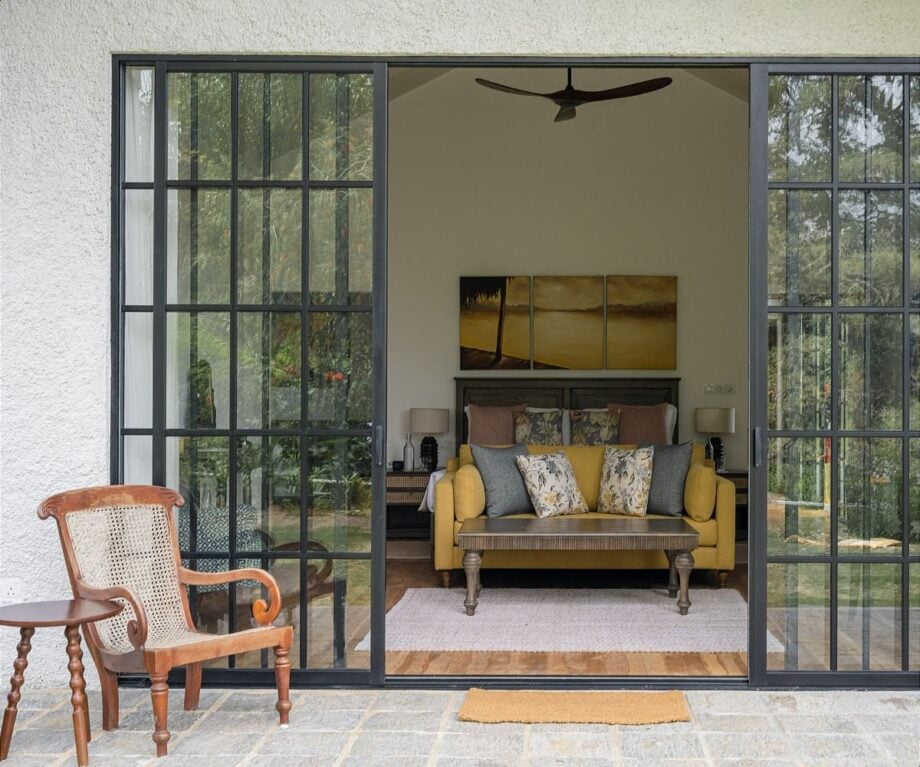
Recently, two new larger rooms have been created in the Owner’s Cottage with the bathrooms featuring free-standing baths as well as showers. Both rooms have direct access to their own garden.
The bathroom
Returning to the master suite, where the Sri Lankan President stayed, the bathroom is large, light and spacious. It has both rainfall and directional showers.
The facilities
Adjacent to the master suite there is a reading room for books borrowed from the bungalow’s library. As there is a chill in the air, Christy lights a fire in a lounge where afternoon tea and pre-dinner gin and tonic are served. “It is a tradition,” Christy announces as he pours before asking how many slices of lime and how many ice cubes we would like.
In the dining room, glass doors slide back to reveal the fully glory of the garden. After every meal the Head Chef Sanjeewa appears, in his white chef’s hat, to discuss the menu for the next meal.
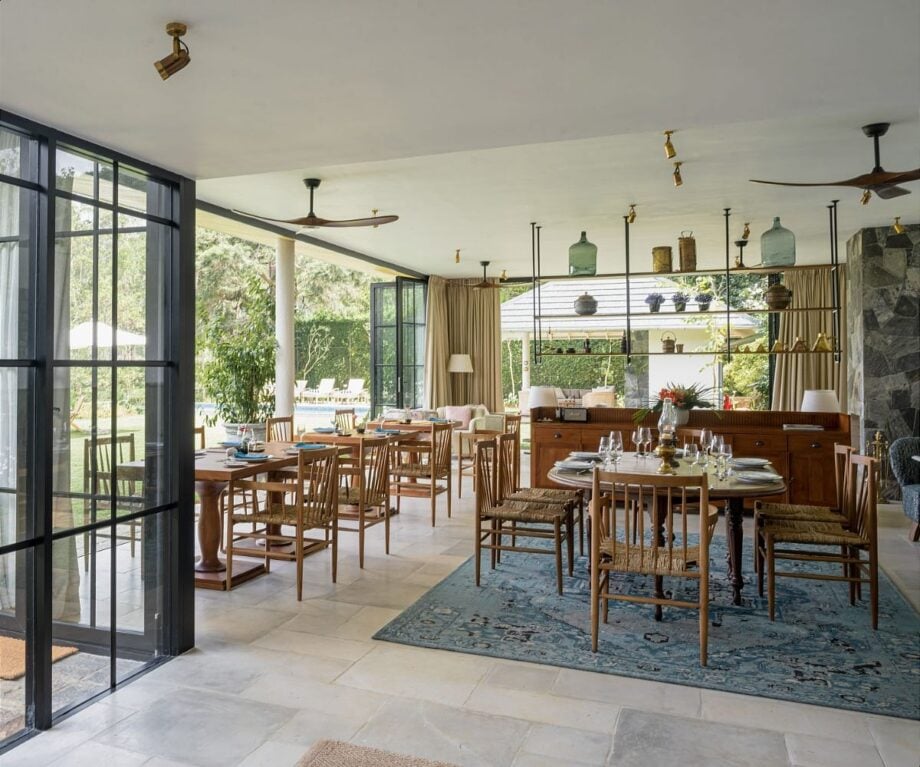
His suggestions for dinner begin with a feta cheese and peashoot salad, followed by a roasted pumpkin soup accompanied by warm oregano rolls. Flavours of cumin and coriander suggest that the kitchen has made the most of the organic herb, spice and vegetable gardens on site.
Atlantic salmon, sourced from Norway, and beef tenderloin from the USA are the options for the main course. We negotiate the heat of the accompanying curry sauce with Sanjeewa.
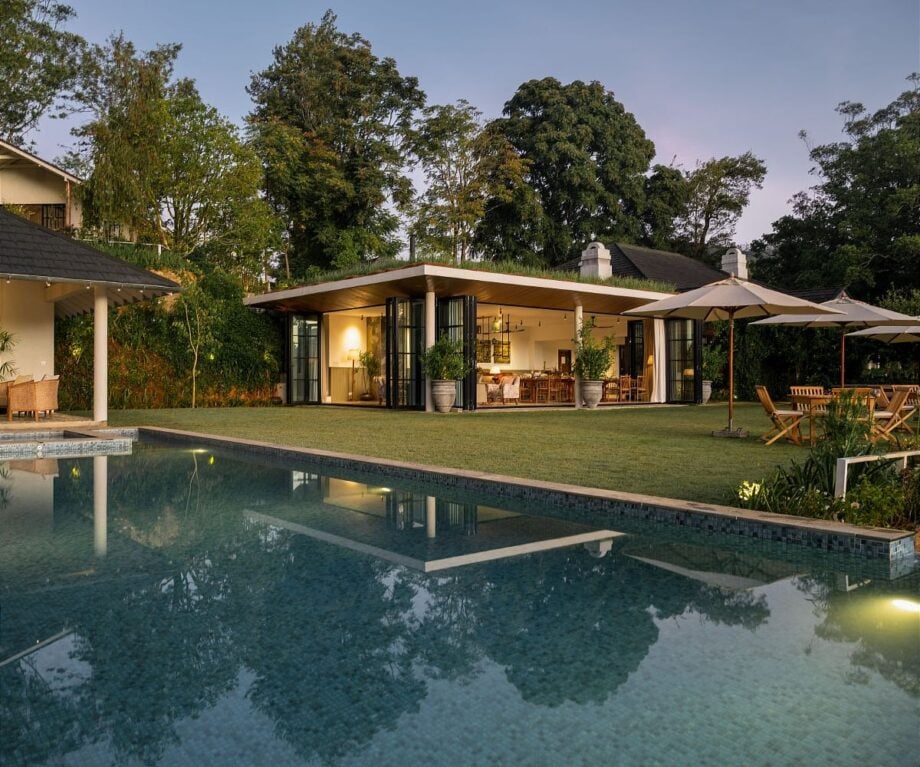
A swimming pool, sun-loungers and jacuzzi beckon. Unless it’s the wet season when the games room comes into its own.
Location
Most guests start by exploring the estate: birdwatching, taking a Stafford plantation trek or opting for a tea plucking and tasting experience. Nearby Ravana Rock offers a variety of hikes which can be combined with a picnic lunch.
Having learnt how to pluck two leaves and a bud, guests can book a factory tour to witness the next stages of a tea leaf’s journey.
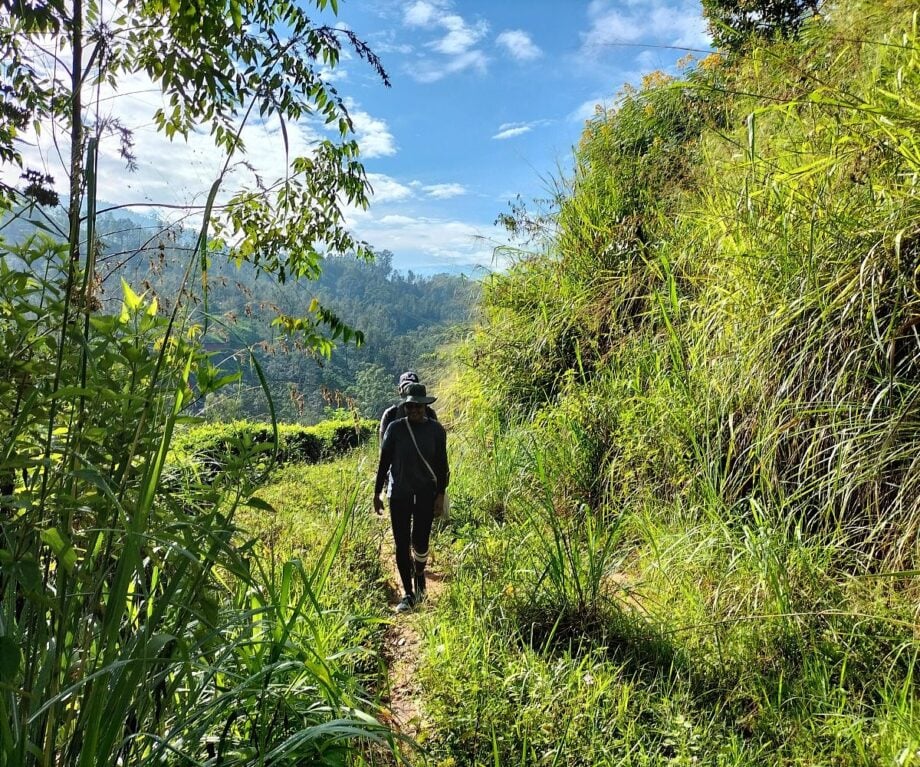
For a scenic trek from Stafford Bungalow there is The Pekoe Trail, a new 300 km long distance walking trail through the Central Highlands. Adventurer Miguel Cunat’s brain child has been funded by the EU and USAiD, benefiting villages that do not usually see tourists
Guests can also take a walking tour of Ragala whilst a tour of its temples is also available. Buddhists, Catholics, Hindus and Moslems happily co-exist in the town with many mixed marriages taking place.

A little further afield, the Hill Station of Nuwara Eliya was a favourite escape from the Summer heat for the British. The racecourse, golf club and Victoria Park all contribute to the town’s Little England nickname.
Other nice touches
Breakfast begins with an eye-opening healthy shot, perhaps passion fruit juice or gooseberry. When the sun is shining breakfast is taken on the lawn surrounded by dew-sprinkled flame lilies, false jalap and white dianthus.
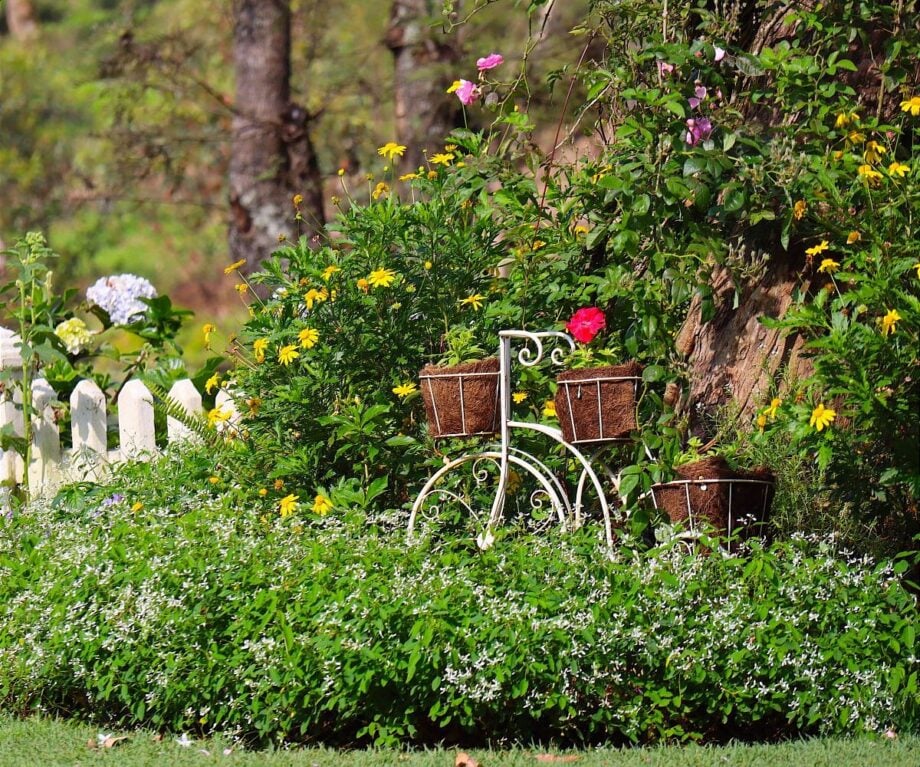
Almost every item that emerges from the kitchen is homemade: marmalade and jams for breakfast, oats biscuits with coffee, the cake or scones or dim sum that accompany afternoon tea.

If there’s a chill in the air, the turndown service places hot water bottles into the beds.
The cost
Deluxe rooms begin from US$ 650 on a half board basis including breakfast, afternoon tea, four course dinner and tea/ coffee with meals during January and February 2024.
The all-inclusive rate of US$ 780 per room, per night, includes includes breakfast, lunch, afternoon tea, dinner, complimentary soft drinks, beer, house wine, house gin/vodka/whisky/arrack with mixers as well as tea and coffee.
The best bit
A trek through the tea fields is a classic introduction to the tea estate. The tea-pluckers, mostly women in colourful saris, are dotted around the waist-high tea bushes.
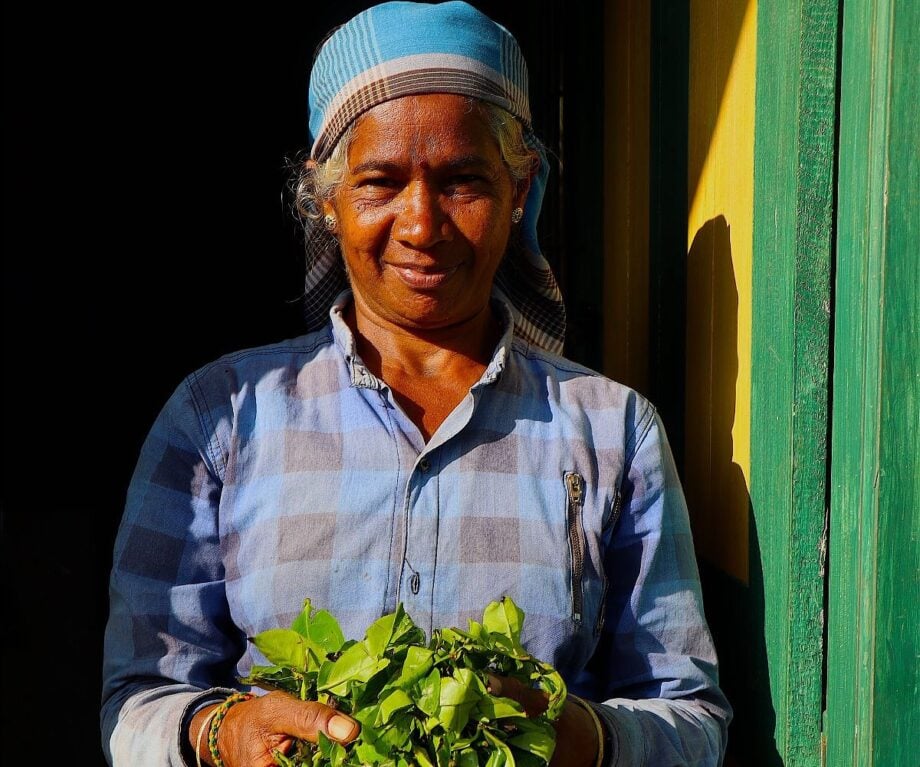
Walkers learn about the routines of the tea fields. The pluckers picking two leaves and a bud for six days a week. The inspectors who weigh and check the quality of the pick. The estate staff who undertake pruning and maintenance every four years: brushing moss from the bark, loosening the soil round the trees’ roots with a fork.
The final verdict
Far more intimate than even the most boutique of hotels, Stafford Bungalow provides a fascinating insight into a lost era. Far from home, the planters turned to reassuring touches of the homeland: caddies on teapots, Marmite on toast, wellies and slippers ready for walks.

Service is impeccable. The butler gives you his card with a 24/7 number that you can ring at any time.
Disclosure: Our stay was sponsored by the Stafford Bungalow.
Did you enjoy this article?
Receive similar content direct to your inbox.

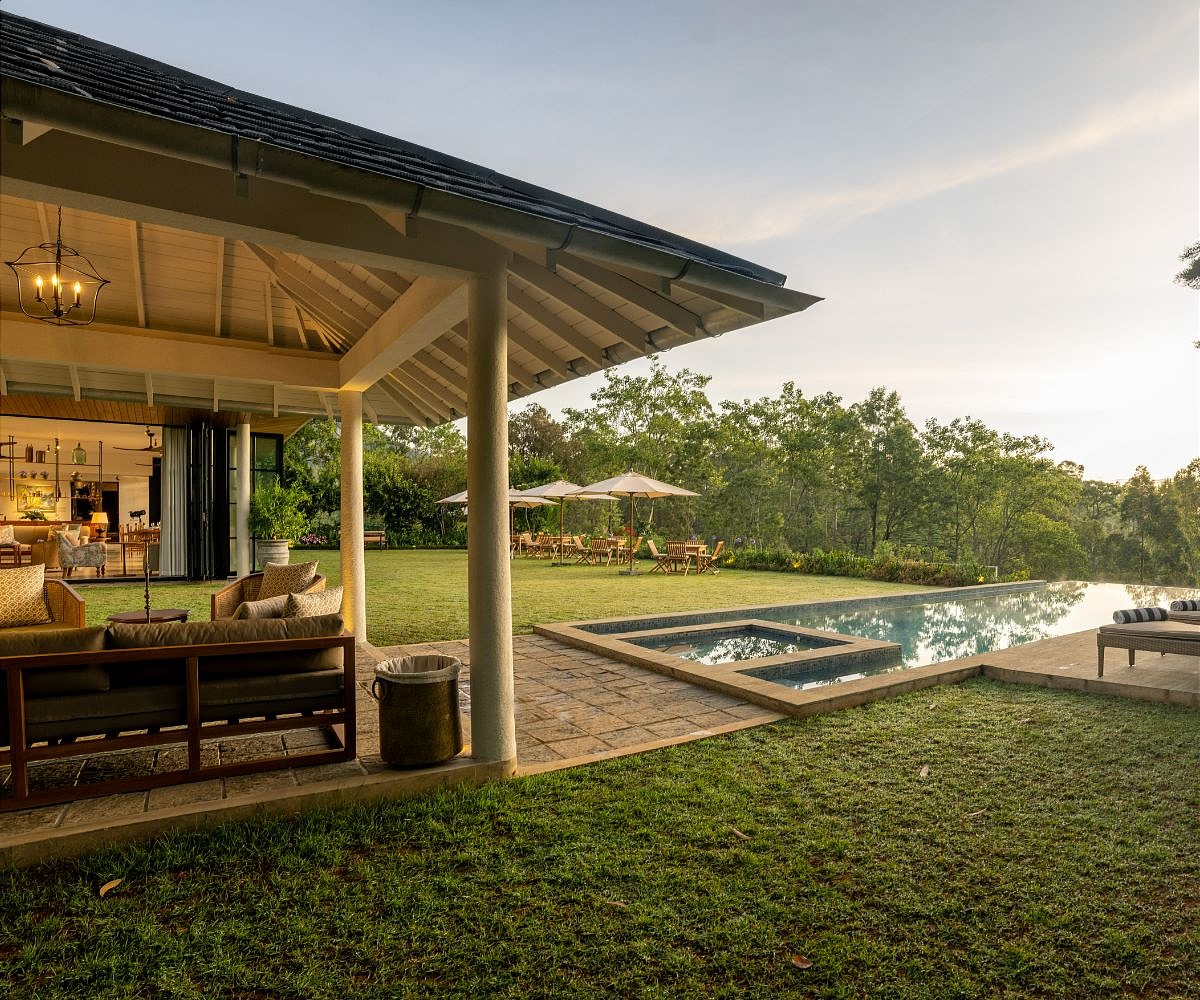


This is a real time warp. I’d love to be able to travel back in time to see how the planters lived. Stafford looks like a real time capsule. It is incredible how it’s all so English.
If you’ve got any interest in history, Stafford is a fascinating place to visit as it takes you back to another era.
I think it helped put me into the planters shoes. They had long days out on the plantations in a climate that was very different to what they were used to at home. One thing that you don’t see is that before the nationalisation of the plantations in 1972, the early planters had huge estates to oversee. Covering all those acres in boiling heat and monsoon rains would have been exhausting. After a while you can see why they rewarded themselves with all the little luxuries.
The Pekoe Trail must be very new as I’ve never heard of it. 300 Km in hilly terrain and very hot temperatures must make it quite tough going. I’d need a lot of cups of tea along the way to recover.
What an amazing place! When we visited Sri Lanka we spent most of our time on the beach, at Negombo, which looking back was a waste of all that travel. If you’re going to fly 11 hours you’ve really got to make the most of it and get more of a feel for the country. I think our philosophy of travel changed a lot over the lockdowns.
You don’t have to miss out on the beach! We finished off with a few days on the beach at Negombo which was a great way to relax after a lot of travelling around the country. Or of course you could acclimatise with some days on the beach at the beginning.
After all, Sri Lanka is an island and taking in a beach is all part of the country. Though it would be a pity not to take in the country’s wonderful interior.
It’s hard to believe that somewhere like this has been preserved, it must be like living in a chapter of history.
Obviously Stafford is far from cheap when you’re getting that level of personal service and high quality food.
We’ve been to Sri Lanka once and only really did Galle. Travel in Sri Lanka can be quite slow and gruelling so I can see the Bungalow being the absolutely perfect place to recharge the batteries as you explore the tea country.
I’ve read so much about colonial life in the Indian Hill Stations that it has always been one of my big travel ambitions to visit that part of India.
Then I watched the Channel Four drama series Indian Summers, with Julie Walters. More than ever I wanted to get a taste of that life. Doing some research I found out that the series had actually been filmed in Sri Lanka, so perhaps Nuwara Eliya is the place for me to live out my Hill Station fantasies.
Glad to hear that some one else enjoyed that TV series too. It was such a pity that it was cancelled after two or three series. I really enjoyed the beautiful setting and filming, though zI was taken in. I had always assumed that it had been filmed in India and not Sri Lanka.
To be honest, the Telegraph is usually my go to media for hotel reviews. Their reviewers seem to have got themselves to most hotels in the world that are worth staying.
I like the look of Stafford so I thought I’d cross reference your review with theirs. Surprise, surprise they haven’t done Stafford yet. One up on a national institution for A Luxury Travel Blog.
Although the bungalow has got so much history it still looks as if it got a lot of contemporary cool about it.
Stafford Bungalow beautifully encapsulates the charm of a bygone era, offering a luxurious and nostalgic experience. The attention to detail, from the colonial-inspired decor to the impeccable service, is truly remarkable. The serene surroundings and lush tea fields provide a perfect backdrop for relaxation and exploration. The all-inclusive offering is a fantastic value, ensuring a delightful stay. This hidden gem is a unique retreat that invites you to savor the essence of Sri Lanka’s tea plantation history with modern comforts.
Most of the pictures suggest that there have been a lot of extensions to the original bungalow. How much of the original bungalow has been preserved?
I’m not sure that the images tell the whole story. At the front of the bungalow the dining room with a little seated area is new but behind that there is still the core of the original building. There are four traditional rooms as well as a library, drawing room and lounge. Our Master Suite had access to a very quaint walled garden which of course had a lawn. All of the gardens are still very traditional and you feel as if you are somewhere in the 1920s or 1930s. There’s no doubt that Stafford Bungalow still preserves the spirit of the planters.